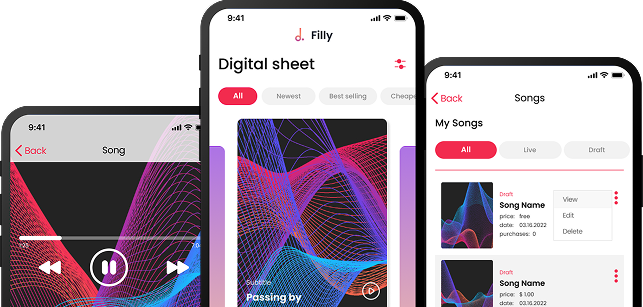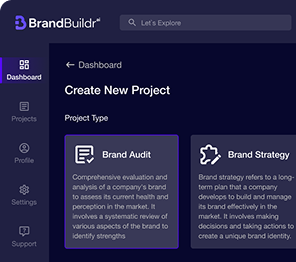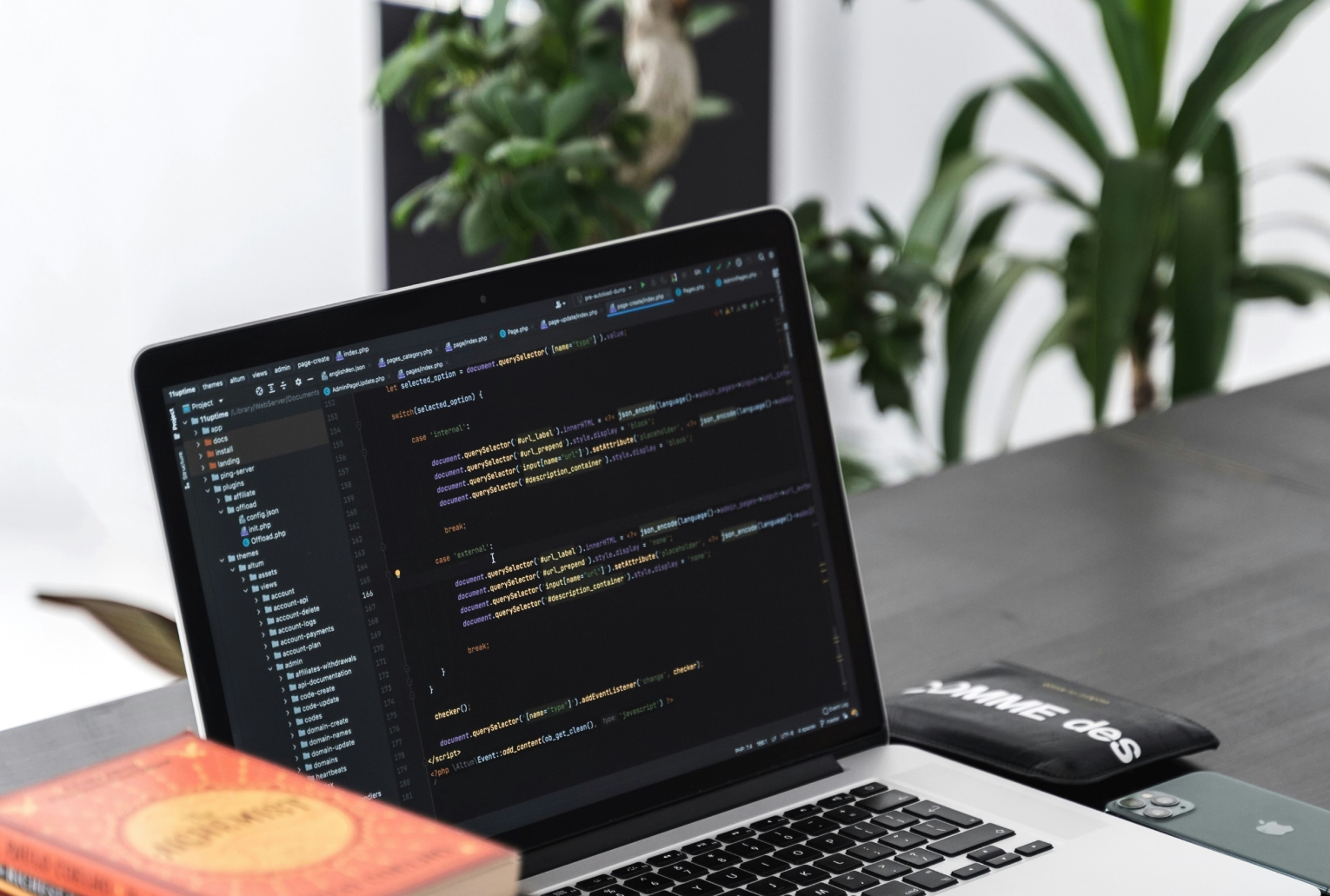Prototyping is one of the most valuable tools in the Discovery Phase of product development. It allows you to test, validate, and refine your ideas before significant time and resources are invested in building the actual product. A prototype helps you visualize how a product will work, gather user feedback, and identify potential issues early in the process. When done correctly, prototyping can save a lot of time, money, and effort by uncovering potential problems before they become costly mistakes.
In this article, we’ll explore the importance of prototyping in the Discovery Phase, the different types of prototypes, and best practices for using them to validate your ideas.

What is Prototyping and Why is it Important?
A prototype is a preliminary version of a product, built to test and validate its core features and functionality. Prototyping is a key component of the Discovery Phase because it allows teams to experiment with different design solutions, interact with the product concept, and gather feedback from users before investing in full development.
The main goals of prototyping are:
- Validate Ideas: Test the feasibility of your product concept and its core features.
- Gather User Feedback: Get feedback from real users to ensure that the product meets their needs.
- Identify Issues Early: Discover usability problems, technical challenges, or design flaws before they become costly to fix.
- Refine and Iterate: Use the insights gathered from testing to improve and iterate on the design.
Prototyping is crucial because it bridges the gap between ideation and development, ensuring that your product is grounded in real user needs and technical feasibility.
Types of Prototypes
There are several types of prototypes, each serving a different purpose in the Discovery Phase. The type of prototype you choose will depend on your goals, the stage of the project, and the level of detail you need. Here are the most common types:
1. Low-Fidelity Prototypes
Low-fidelity prototypes are simple, often hand-drawn or created using basic wireframe tools. They focus on layout, structure, and navigation rather than detailed design or functionality. Low-fidelity prototypes are useful for quickly testing ideas and gathering feedback early in the process.
When to Use Low-Fidelity Prototypes:
- Early in the Discovery Phase: When you want to validate the basic concept and structure of the product without investing in detailed design or development.
- Brainstorming: When you’re exploring multiple design ideas and need a quick way to visualize different options.
Example: A hand-drawn sketch of a mobile app’s main screens that shows how users will navigate between different sections of the app.

2. Medium-Fidelity Prototypes
Medium-fidelity prototypes are more detailed than low-fidelity versions but still lack full functionality. They often include digital wireframes, simple design elements, and clickable interactions. Medium-fidelity prototypes are great for testing user flows and navigation, as well as gathering feedback on design concepts.
When to Use Medium-Fidelity Prototypes:
- After Initial Validation: When you’ve validated the basic concept with a low-fidelity prototype and want to refine the user experience.
- Testing User Flows: When you need to test how users move through the product and whether the navigation is intuitive.
Example: A digital wireframe of a website that includes basic interactions (e.g., clicking on buttons or navigating between pages) to simulate the user experience.

3. High-Fidelity Prototypes
High-fidelity prototypes are highly detailed and often resemble the final product. They include realistic design elements, interactive features, and in some cases, even simulated data. High-fidelity prototypes are useful for testing the product’s look and feel, as well as for presenting to stakeholders or potential investors.
When to Use High-Fidelity Prototypes:
- Before Development: When you’re finalizing the product design and need to validate the detailed interactions and visual elements before moving into development.
- Stakeholder Buy-In: When you need to showcase the product to stakeholders, clients, or investors to gain approval or secure funding.
Example: A fully designed, clickable mockup of a mobile app that looks and behaves almost exactly like the final product but isn’t yet connected to a backend.
The Benefits of Prototyping in the Discovery Phase
Prototyping offers numerous advantages during the Discovery Phase, ensuring that your product is both viable and user-friendly. Here’s why it’s so valuable:
1. Validate Assumptions
Every product idea is based on a set of assumptions about what users need and how they will interact with the product. Prototyping allows you to test these assumptions with real users before development begins. For example, you might assume that users will understand how to navigate your app, but a prototype can quickly reveal if they struggle with certain interactions.
Benefit: By validating assumptions early, you can avoid building features or workflows that users don’t actually need or find confusing.
2. Gather Early User Feedback
Prototypes provide a tangible way for users to interact with your product concept, allowing you to gather feedback on everything from usability to design. This feedback is invaluable for refining the product and ensuring it meets user needs.
Benefit: Gathering user feedback early in the process reduces the likelihood of major changes later on, saving time and resources.
3. Identify Usability Issues
One of the key benefits of prototyping is that it helps identify usability issues before full development begins. Whether it’s confusing navigation, poorly placed buttons, or unclear calls to action, prototypes allow you to test the user experience in a safe, low-cost environment.
Benefit: Addressing usability issues early prevents costly redesigns and ensures that the final product offers a seamless user experience.
4. Test Different Design Solutions
Prototyping allows you to experiment with different design solutions and see which ones work best. By testing multiple versions of a design, you can compare user preferences and make data-driven decisions about which approach to pursue.
Benefit: Prototyping allows you to iterate quickly, refining your design until it meets both user needs and business goals.
5. Save Time and Money
By testing and validating ideas with prototypes, you can identify potential issues early and avoid investing in features or designs that don’t work. This helps prevent costly mistakes during the development phase and ensures that resources are focused on building a product that users will love.
Benefit: Prototyping reduces the risk of wasting time and money on features that don’t provide value, allowing you to focus on what matters most.


Best Practices for Prototyping in the Discovery Phase
To get the most out of your prototyping efforts, it’s important to follow best practices that ensure the process is efficient and effective. Here are some tips for successful prototyping during the Discovery Phase:
1. Start Simple
Don’t jump straight into high-fidelity prototyping. Start with low-fidelity prototypes to test basic concepts and gather initial feedback. This allows you to iterate quickly without getting bogged down in the details.
Tip: Use tools like paper sketches or digital wireframe tools (e.g., Balsamiq, Sketch) to create quick, low-fidelity prototypes.
2. Involve Stakeholders Early
Involving stakeholders early in the prototyping process ensures that everyone is aligned on the product vision and goals. This can help prevent miscommunication and avoid costly changes later in the development process.
Tip: Regularly share prototypes with stakeholders, whether through presentations, meetings, or collaborative design tools (e.g., Figma, InVision).
3. Test with Real Users
The primary goal of prototyping is to gather feedback from real users, so it’s important to test your prototypes with your target audience. Observing how users interact with the prototype can reveal critical insights that you may not have considered.
Tip: Use usability testing sessions, where users complete specific tasks with the prototype, to gather actionable feedback.
4. Iterate Based on Feedback
Prototyping is an iterative process. After gathering feedback from users and stakeholders, make improvements to the design and test again. The goal is to refine the product concept over multiple iterations until you’re confident it meets user needs.
Tip: Use an agile approach to prototyping, where feedback is collected and acted upon in short sprints, allowing for continuous improvement.
5. Don’t Overcomplicate
Prototypes are meant to be quick, cost-effective ways to test ideas — not polished, final products. Focus on testing specific features or user flows rather than trying to build a complete product. This allows you to gather feedback more efficiently and pivot when necessary.
Tip: Keep prototypes lean by focusing only on the most critical elements of the user experience and adding more detail as you iterate.
Using Prototypes to Validate Your Ideas
Once your prototypes are built, the next step is to use them to validate your ideas and gather insights. Here’s how to effectively validate your product concept through prototyping:
1. Define Validation Criteria
Before testing the prototype, define the specific criteria that will determine whether your idea is validated. For example, you might want to validate that users can complete a certain task, that the navigation is intuitive, or that the overall concept resonates with users.
Example Validation Criteria:
- Can users successfully complete the main task without assistance?
- Do users understand the product’s core value proposition after interacting with the prototype?
- Are users satisfied with the overall experience?
2. Conduct Usability Tests
Usability testing is one of the most effective ways to validate a prototype. During a usability test, users are asked to complete specific tasks while interacting with the prototype. This allows you to observe how they navigate the product and where they encounter difficulties.
Tip: Ask open-ended questions during the test to gather qualitative feedback, and record user behavior for later analysis.
3. Analyze and Iterate
After gathering feedback, analyze the results to identify patterns, common pain points, and areas for improvement. Use this data to refine the prototype and test again. The goal is to iterate on the design until the prototype meets the validation criteria and provides a positive user experience.
Tip: Prioritize fixes based on the most critical issues that impact the user experience, and focus on solving those first before moving on to minor improvements.
Great products don’t start with code — they start with discovery. The better you understand your users, market, and challenges, the stronger your foundation for long-term success.

Conclusion
Prototyping is an essential part of the Discovery Phase, providing a low-cost, efficient way to test and validate ideas before moving into full development. By using prototypes to gather feedback, identify usability issues, and refine your product concept, you can ensure that your final product is both feasible and user-friendly. Following best practices like starting simple, involving stakeholders, and iterating based on feedback will help you maximize your prototyping efforts and set your product up for success.
FAQ
What is prototyping in the discovery phase?
Prototyping is the process of creating early, simplified versions of a product to visualize ideas and test assumptions. In the discovery phase, prototypes help teams explore concepts, workflows, and user interactions before committing to development.
Why is prototyping important for idea validation?
Prototyping allows teams to validate ideas with real users at a low cost and low risk. By gathering early feedback, teams can identify usability issues, confirm product-market fit, and avoid investing in features that don’t deliver value.
What types of prototypes are commonly used in discovery?
Common prototype types include low-fidelity sketches, wireframes, clickable prototypes, and high-fidelity visual mockups. The choice depends on the stage of discovery and the level of detail needed to test specific assumptions.
How does prototyping improve collaboration with stakeholders?
Prototypes provide a shared visual reference that helps align stakeholders around product goals and functionality. They make abstract ideas tangible, reduce misunderstandings, and support faster decision-making.
How can prototypes be tested effectively with users?
Effective testing involves observing users as they interact with the prototype, asking targeted questions, and collecting qualitative and quantitative feedback. Usability testing sessions, surveys, and A/B comparisons are common validation methods.
When should teams move from prototyping to MVP development?
Teams should move to MVP development once core assumptions are validated, user feedback confirms value, and the prototype demonstrates a clear solution to the problem. This ensures the MVP is built on proven insights rather than assumptions.
Heading 1
Heading 2
Heading 3
Heading 4
Heading 5
Heading 6
Lorem ipsum dolor sit amet, consectetur adipiscing elit, sed do eiusmod tempor incididunt ut labore et dolore magna aliqua. Ut enim ad minim veniam, quis nostrud exercitation ullamco laboris nisi ut aliquip ex ea commodo consequat. Duis aute irure dolor in reprehenderit in voluptate velit esse cillum dolore eu fugiat nulla pariatur.
Block quote
Ordered list
- Item 1
- Item 2
- Item 3
Unordered list
- Item A
- Item B
- Item C
Bold text
Emphasis
Superscript
Subscript





















.avif)



.avif)

.avif)


